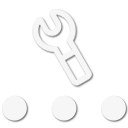
Educator I
I watched Dean Shirley's 10 Essentials for the Novice Overlander video from the Virtual Overland Expo and he certainly was not a fan of external tanks. His fuel discussion starts at 15:00 in the video. Aside from the obvious possibility of theft, one of his reasons was denial of entry to a National Park (16:55 in video, he did not state which park) due to tanks mounted on the outside of the vehicle. Being a National Park nerd, that part really got me wondering about the tanks.
As a novice I like knowing I have 2 gallons (30 miles) as a reserve if needed. It gives me a sense of security. Additionally, if someone else needs fuel, I have it readily available.
What is the general feeling on external fuel tanks?
As a novice I like knowing I have 2 gallons (30 miles) as a reserve if needed. It gives me a sense of security. Additionally, if someone else needs fuel, I have it readily available.
What is the general feeling on external fuel tanks?







